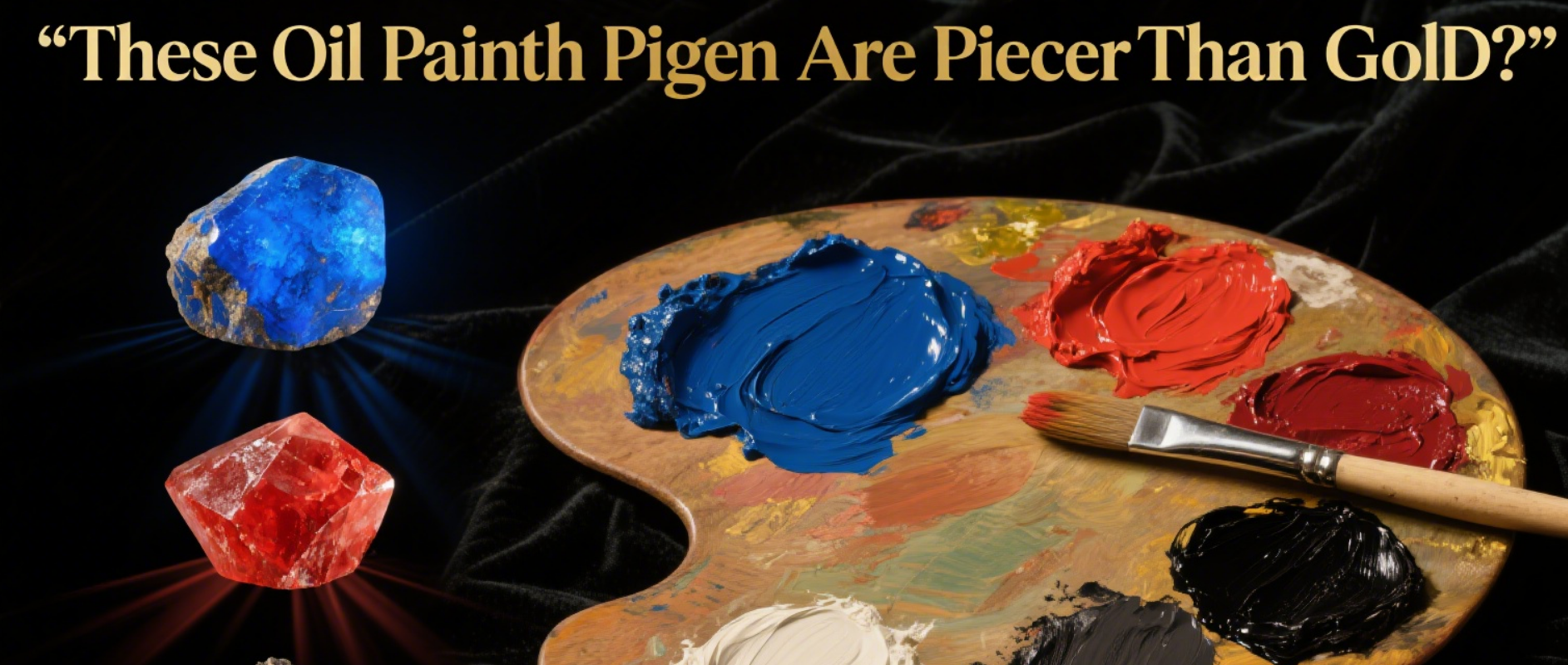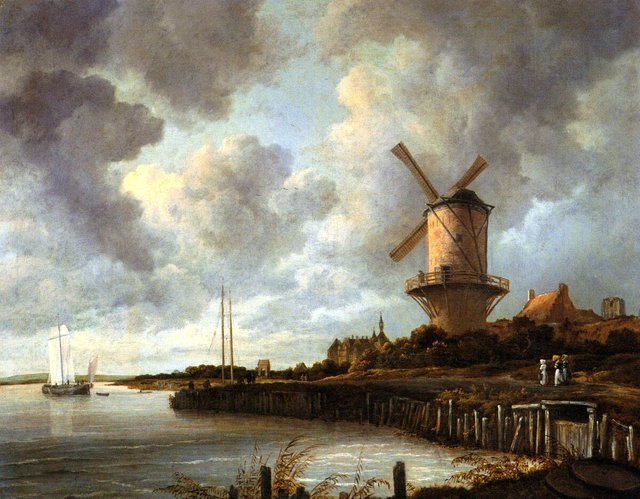These Oil Paint Pigments Are Pricier Than Gold? 5 Legendary Ones Exposed

Walk through a museum, and you might stand before a painting worth millions—not just for the artist’s name, but for the pigments on its surface. Some oil paint pigments are so rare, so labor-intensive to make, that they’ve outpriced gold for centuries. At theArtPaint, we’ve tracked these legendary colors to uncover why they’re worth their weight in treasure.
1. Ultramarine: The “Blue Gold” of the Renaissance
Before the 19th century, the only source of deep blue pigment was lapis lazuli—a semi-precious stone mined in Afghanistan. To make ultramarine, miners crushed the stone, then spent weeks separating the blue particles from impurities. The result? A pigment so costly that Artists like Michelangelo left sketches unfinished, waiting for patrons to fund the blue.
A gram of pure ultramarine once cost more than a laborer’s monthly wage. It’s why in Renaissance religious paintings, the Virgin Mary’s robe is often ultramarine—blue symbolized divinity, and using it proved a patron’s wealth. Even today, natural ultramarine (distinct from synthetic versions) remains a luxury, used only in high-end custom art.
2. Vermilion: The Toxic Red of Emperors
Vermilion, a vivid scarlet, comes from cinnabar—a mercury-rich mineral. Grinding cinnabar into pigment was dangerous (mercury fumes poisoned workers), but its bold hue made it irresistible. Ancient Chinese emperors used it to paint palaces; European nobility demanded it for coats of arms.
Its toxicity only added to its allure—only the wealthy could afford the risk (and the skilled labor) to produce it. While synthetic reds have replaced vermilion in most art, original 17th-century works with vermilion details now fetch premium prices at auctions.
3. Lead White: The “Secret” of Glowing Masterpieces
Lead white isn’t rare, but its legacy makes it precious. For 2,000 years, artists mixed lead with vinegar and water to create a thick, opaque white that reflects light, making skin tones and highlights glow. It’s why Rembrandt’s portraits look so lifelike—the lead white in flesh tones catches light like real skin.
Toxic (like vermilion), it was phased out in the 20th century for safer alternatives. But its unique luminosity can’t be replicated. Restorers of old masters still study lead white’s properties to preserve their glow, making it a cornerstone of art history.
4. Bone Black: The Deep, Historic Black
Not all blacks are equal. Bone black—made by burning animal bones in controlled conditions—produces a rich, velvety black with subtle warm undertones. Unlike charcoal black (which fades), bone black resists light and adds depth to shadows.
Renaissance artists used it to create dramatic contrasts (chiaroscuro) in religious scenes. Today, it’s prized for custom pet portraits at theArtPaint—its depth makes a dog’s fur or a cat’s eyes look three-dimensional.
5. Cobalt Violet: The “Forgotten” Luxury
Cobalt violet is a rare gem. Discovered in the 19th century, it’s made from cobalt salts, which are scarce and expensive to refine. Its soft, muted purple was a favorite of the Impressionists, but high costs limited its use.
Few artists could afford it, so it’s rarely seen in historic works. Today, it’s a niche choice for collectors, adding a touch of exclusivity to modern oil paintings.
How to Spot Precious Pigments
Want to know if a painting uses these rare pigments? Here’s how:
Ultramarine: Look for a deep, slightly purplish blue that doesn’t fade in light.
Vermilion: Check for a bright red that darkens (slightly) over time (synthetics stay the same).
Lead White: Hold the painting at an angle—genuine lead white highlights will “pop” more than modern whites.
| Pigment | Source | Historic Value | Modern Use |
|---|---|---|---|
| Ultramarine | Lapis lazuli stone | Equal to gold (1500s) | High-end custom portraits |
| Vermilion | Cinnabar (mercury) | Royal/religious art | Rare, replaced by synthetics |
| Lead White | Lead + vinegar | Core of classic portraits | Restorations only |
| Bone Black | Burned animal bones | Dramatic shadows | Custom pet art, landscapes |
| Cobalt Violet | Cobalt salts | Impressionist favorite | Niche collector pieces |
Precious pigments aren’t just colors—they’re stories of history, skill, and rarity. At theArtPaint, we honor this legacy by using select rare pigments in our premium custom works, ensuring your Oil painting carries the same timeless value as the masters.
Ready to own a piece with a touch of luxury? Explore our custom oil paintings, where every stroke tells a story of craftsmanship.




